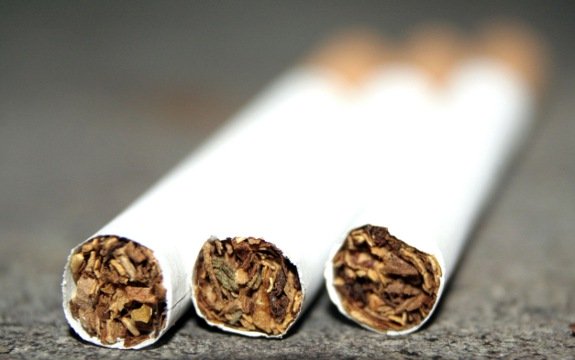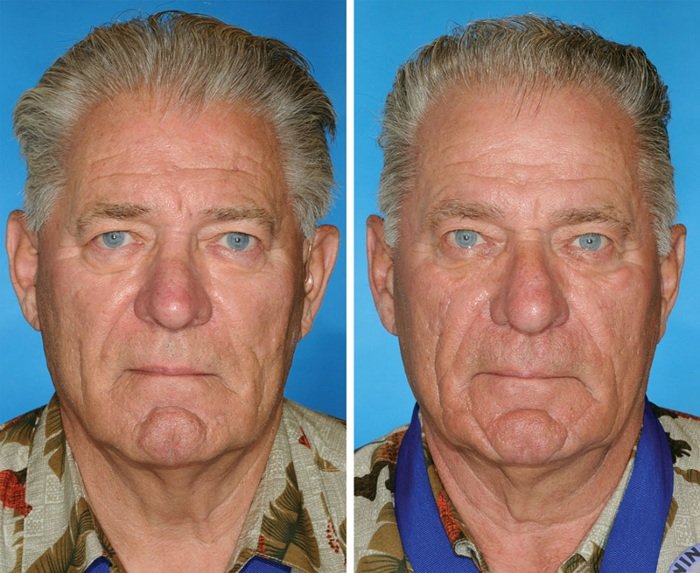Photographic Proof that Smoking Causes Premature Aging

 We’ve long been told that smoking causes premature aging; that it deepens wrinkles and dehydrates our skin. But a new study offers some interesting evidence to back this claim—photographs comparing smokers with what they would look like as non-smokers, through the use of identical twins.
We’ve long been told that smoking causes premature aging; that it deepens wrinkles and dehydrates our skin. But a new study offers some interesting evidence to back this claim—photographs comparing smokers with what they would look like as non-smokers, through the use of identical twins.
The study, from researchers with Western Reserve University and University Hospitals of Cleveland, Ohio, indicates twins who smoke look significantly older than their non-smoking identical counterparts.
The twins were gathered from a Twins Day Festival in Twinsburg, Ohio. Seventy-nine pairs took part in the study. Fifty-seven of the pairs were women and the average age of all participants was 48. One twin of each pair was a smoker and the other had smoked for 5 years or less, or not at all. Each pair was subjected to close-up photos and interview questions.
Read: What Happens when you Quit Smoking?
“We found that the smoking twin compared with their nonsmoking counterpart had worse scores for upper eyelid skin redundancy, lower lid bags, malar bags, nasolabial creases, jowls, upper lip lines (smoker’s lines) on repose, and lower lip vermillion lines.”
Judges specializing in the signs of aging reviewed those photographs with no knowledge of smoking history. They analyzed the “gradients of the twins’ wrinkles and other facial features that may be affected by aging, including the presence of bags under the eyes and lower eyelid skin discoloration,” according to Medical News Today. Each wrinkle and feature was also given a score relative to its severity.
The differences between smoking and non-smoking scores were significant.
“Smokers demonstrated more sagging of the upper eyelids and more bags of the lower eyelids and under the eyes. They also had higher scores for facial wrinkles, specifically wrinkling of the upper and lower lips, sagging jowls (lower part of the cheek), and more pronounced lines between the nose and mouth.”

Interestingly, when asked to identify which twin was a smoker, the judges chose correctly only 57% of the time. In cases where both twins smoked, they were able to choose the one who smoked the longest 63.7% of the time.
“To our knowledge, our article is the first of its kind to analyze faces of a large series of monozygotic twins with a difference in smoking histories,” wrote the researchers. “This study details the specifics of facial aging brought on by smoking, which primarily affects the middle and lower thirds of the face. It also demonstrates that a 5-year difference in smoking history can cause noticeable differences in facial aging in twins.”

Where are the rest of the twin photos? If you’re gonna talk about multiple sets of twins taking part in this study then more than one photo would be nice. Just sayin.
Sorry
but sugar and low fat diet will cause you to age faster, esp the skin.
There’s more science to support smoking increasing your lifespan. Which
is the reason the powers that be are trying ban it worldwide.
Even
smoking is clearly trumped by another factor or combination of factors,
judging by the unusually low incidence of heart attacks in France,
Japan and on Kitava.
The Kitavans: Wisdom from the Pacific Islands
There
are very few cultures left on this planet that have not been affected
by modern food habits. There are even fewer that have been studied
thoroughly. The island of Kitava in Papua New Guinea is host to one such
culture, and its inhabitants have many profound things to teach us
about diet and health.
The
Kitava study, a series of papers produced primarily by Dr. Staffan
Lindeberg and his collaborators, offers a glimpse into the nutrition and
health of an ancient society, using modern scientific methods. This
study is one of the most complete and useful characterizations of the
diet and health of a non-industrial society I have come across. It’s
also the study that created, and ultimately resolved, my cognitive
dissonance over the health effects of carbohydrate.
From
the photos I’ve seen, the Kitavans are beautiful people. They have the
broad, attractive faces, smooth skin and excellent teeth typical of
healthy non-industrial peoples.
Like
the Kuna, Kitavans straddle the line between agricultural and
hunter-gatherer lifestyles. They eat a diet primarily composed of tubers
(yam, sweet potato, taro and cassava), fruit, vegetables, coconut and
fish, in order of calories. This is typical of traditional Pacific
island cultures, although the relative amounts differ.
Grains,
refined sugar, vegetable oils and other processed foods are virtually
nonexistent on Kitava. They get an estimated 69% of their calories from
carbohydrate, 21% from fat, 17% from saturated fat and 10% from protein.
Most of their fat intake is saturated because it comes from coconuts.
They have an omega-6 : omega-3 ratio of approximately 1:2. Average
caloric intake is 2,200 calories per day (9,200 kJ). By Western
standards, their diet is high in carbohydrate, high in saturated fat,
low in total fat, a bit low in protein and high in calories.
Now for a few relevant facts before we really start diving in:
•
Kitavans are not particularly active. They have an activity level
comparable to a moderately active Swede, the population to which Dr.
Lindeberg draws frequent comparisons.
• They have abundant food, and shortage is practically unknown.
•
Their good health is probably not related to genetics, since
genetically similar groups in the same region are exquisitely sensitive
to the ravages of industrial food. Furthermore, the only Kitavan who
moved away from the island to live a modern life is also the only fat
Kitavan.
•
Their life expectancy at birth is estimated at 45 years (includes
infant mortality), and life expectancy at age 50 is an additional 25
years. This is remarkable for a culture with limited access to modern
medicine.
• Over 75% of Kitavans smoke cigarettes. Even the most isolated societies have their modern vices.
Are they smoking organically-raised tobacco with no additives? Where do they get their cigarettes?
you act as if your going to get the entire story on natural society
Pfff.Am i glad.I have no twin.So no aging for me.:)
Ever heard the phrase ‘correlation is not causation’?
Also, can we just stop with all the anti-smoking stuff? People know what’s good and bad for them, and they can make their own decisions. There are better things that people could be spending their money on, as opposed to a study which attempts to prove something we already know.
I am a former smoker, and HATE cigarettes. I have seen various sources that say commercial tobacco is sprayed with an array of toxic and even radioactive chemicals. Also what is all that filler made of, and are the fiberglass filters really helping? Point being that while I think industrial cigarettes and tobacco are horrible, I don’t believe that naturally grown tobacco has the same disease causing effects. Maybe it even has some benefits. After all, people have been smoking tobacco long before corporations started selling it in cigarette form. And that is really when all the health ailments associated with smoking became known. So if you must smoke, grow your own!